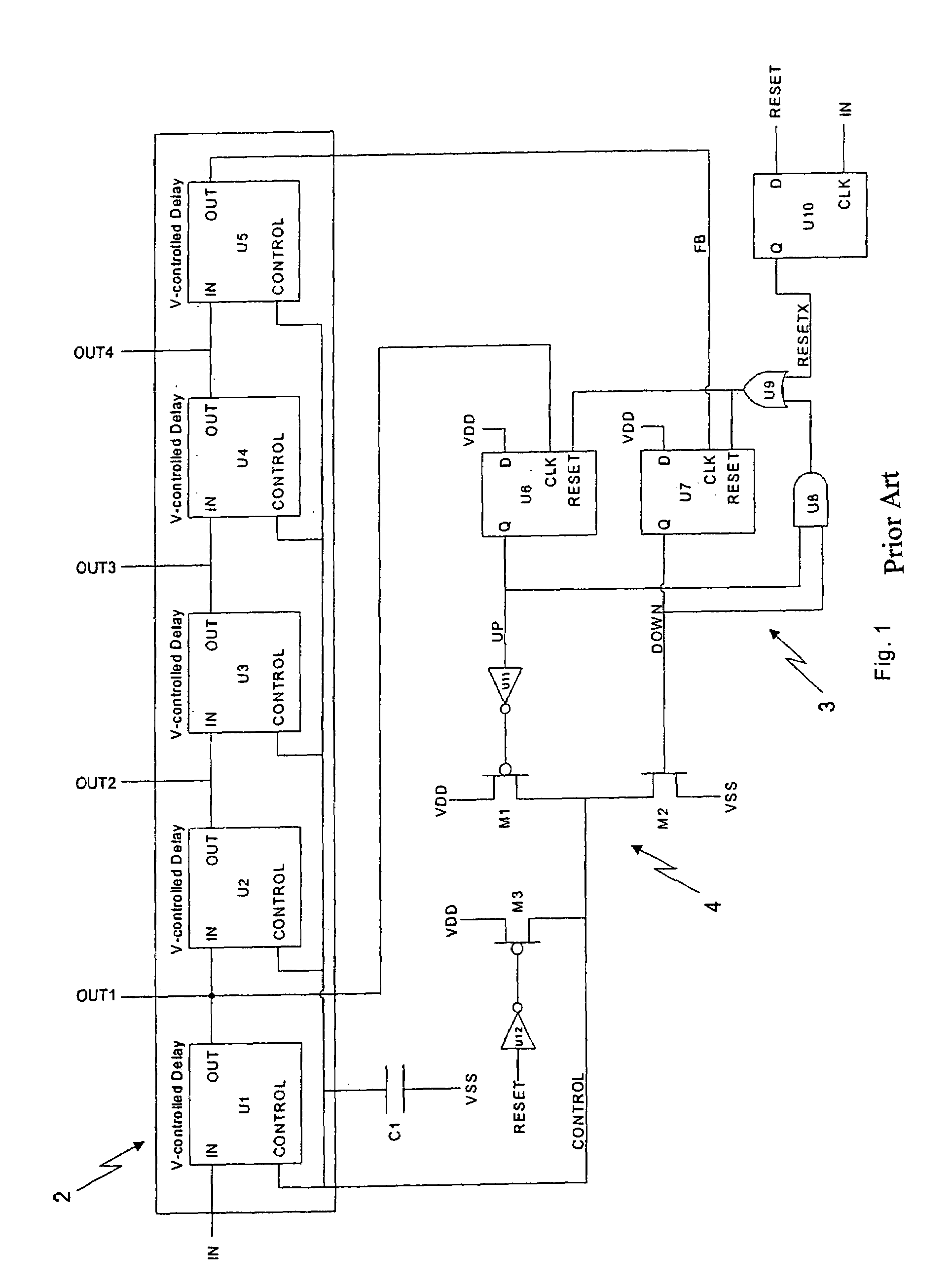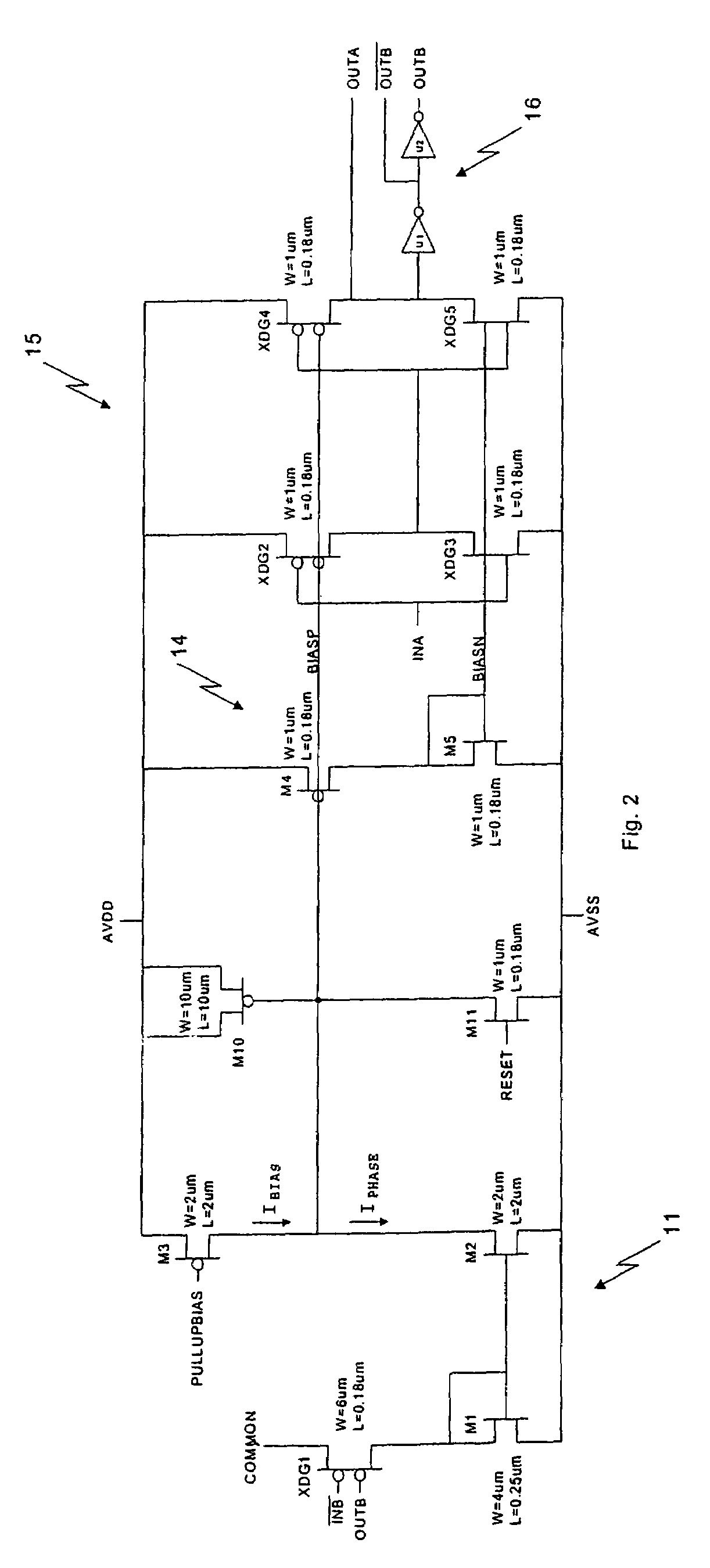Phase multiplier circuit
a phase multiplier and circuit technology, applied in the direction of generating/distributing signals, pulse techniques, instruments, etc., can solve the problem of difficult to achieve equal spacing
- Summary
- Abstract
- Description
- Claims
- Application Information
AI Technical Summary
Benefits of technology
Problems solved by technology
Method used
Image
Examples
Embodiment Construction
[0017]Three instances of the phase multiplier subcircuit of FIG. 2 and additional circuitry comprise the phase multiplier circuit of FIG. 3. The phase multiplier subcircuit of FIG. 2 comprises a difference circuit 11, a loop filter transistor M10, a reset transistor M11, a BIASN generation circuit 14, a voltage controlled delayed circuit 15, and a buffer 16.
[0018]The difference circuit 11 converts a phase delay to a phase current and subtracts this phase current from a bias current. Difference circuit 11 comprises p-channel dual-gate transistor XDG1 having a source coupled to common node COMMON, and first and second gate inputs coupled to inputs / INB and OUTB; a first current mirror comprising n-channel transistors M1 and M2, and bias current source transistor M3. Transistor XDG1 sources a first current during a period of time when inputs / INB and OUTB are both low, and this period of time is a measure of a phase delay from a falling edge of / INB to a rising edge of OUTB. The first ...
PUM
 Login to View More
Login to View More Abstract
Description
Claims
Application Information
 Login to View More
Login to View More - R&D
- Intellectual Property
- Life Sciences
- Materials
- Tech Scout
- Unparalleled Data Quality
- Higher Quality Content
- 60% Fewer Hallucinations
Browse by: Latest US Patents, China's latest patents, Technical Efficacy Thesaurus, Application Domain, Technology Topic, Popular Technical Reports.
© 2025 PatSnap. All rights reserved.Legal|Privacy policy|Modern Slavery Act Transparency Statement|Sitemap|About US| Contact US: help@patsnap.com



